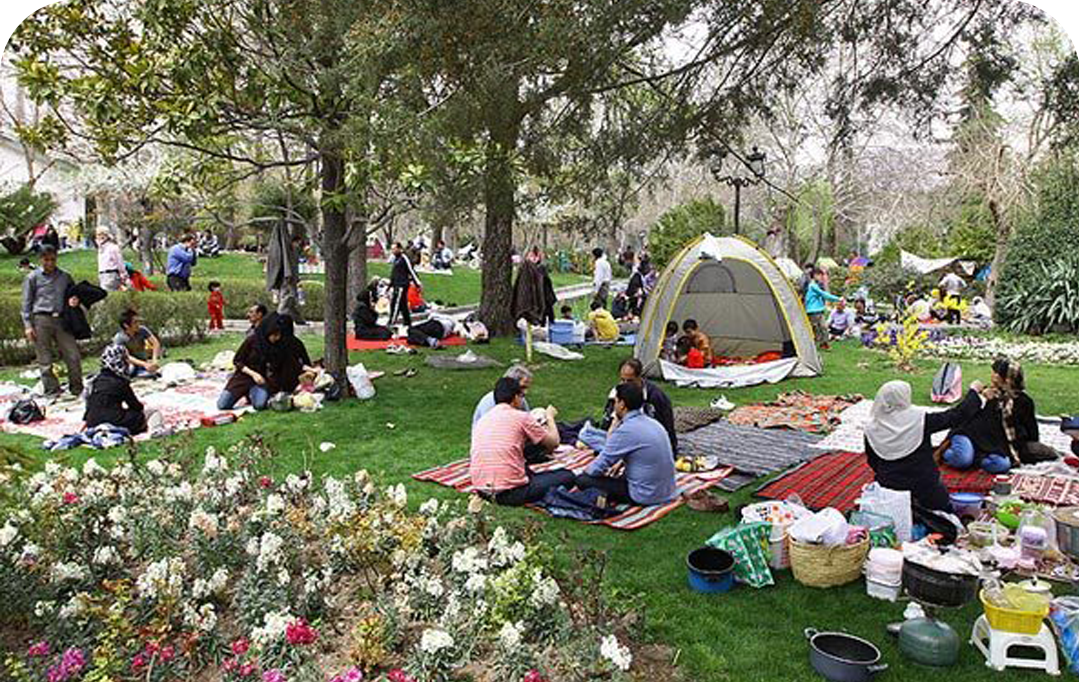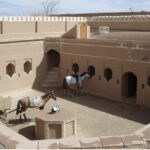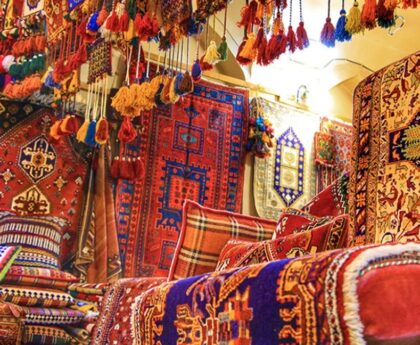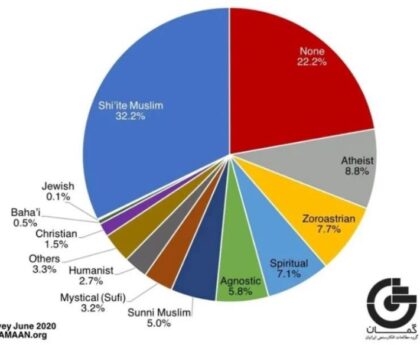Sizdah Bedar is an Iranian festival held annually on the thirteenth day of Farvardin, the first month of the Iranian calendar, during which people spend time picnicking outdoors. It marks the end of the Nowruz holidays in Iran. In ancient sources, such as Shahnameh, there is a reference to “the thirteenth day of Farvardin”. The popular belief is that ancient Iranians celebrated the 13th day of Nowruz after twelve days of celebrating, each day represents a month of the year. It was an official ending to Nowruz and a beginning to the remaining twelve months of the year.
According to some Iranians’ belief the number thirteen is ominous. Sizdah Bedar, therefore, means getting rid of the ominous of the day thirteen”. Going on a picnic in the heart of nature and natural places is one way to do so.
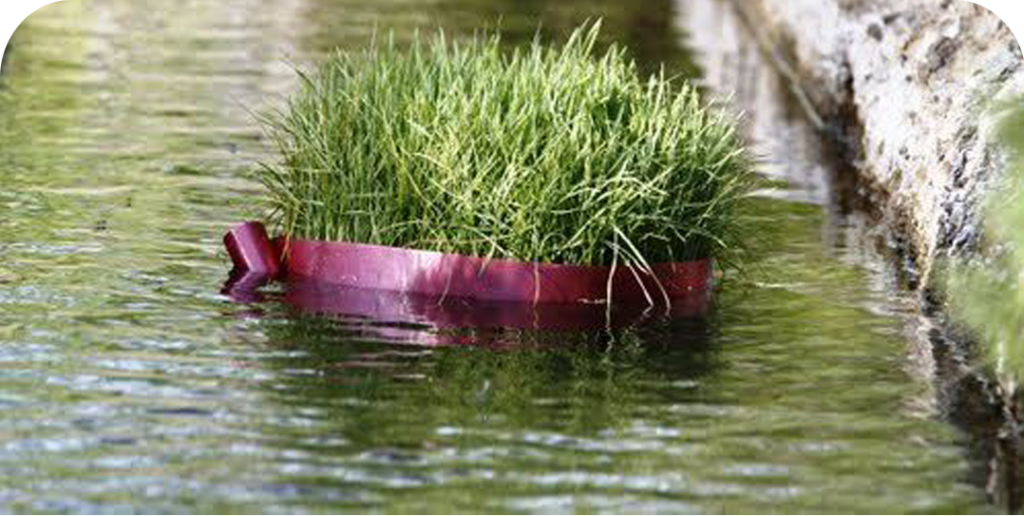
Releasing sprouted greens back into nature
A custom performed at the end of the picnic is to throw the sprouted greens that were part of the traditional Haft-Seen Nowruz display into moving water. Touching someone else’s greens on this day or bringing the plants back home is considered bad luck.
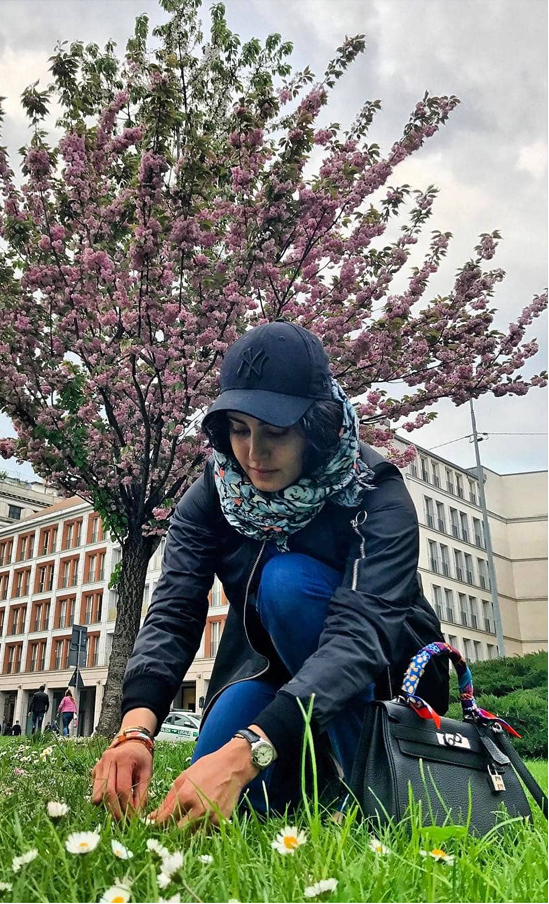
Knotting the greens
Knotting the stems of the greens (sabzeh gereh zadan)
before tossing them into the water is a customary ritual for young single people, especially for young women.
This indicates a wish to find a partner or a husband.

Sekanjabin and lettuce
Sekanjabin is a very old Iranian drink. The Persians make it with vinegar, honey, and sometimes mint. It is very popular in summer, but it is also an inseparable part of Sizdah Bedar.
Iranians eat lettuce with Sekanjabin. This act is symbolically a promise to stay healthy during the New Year.
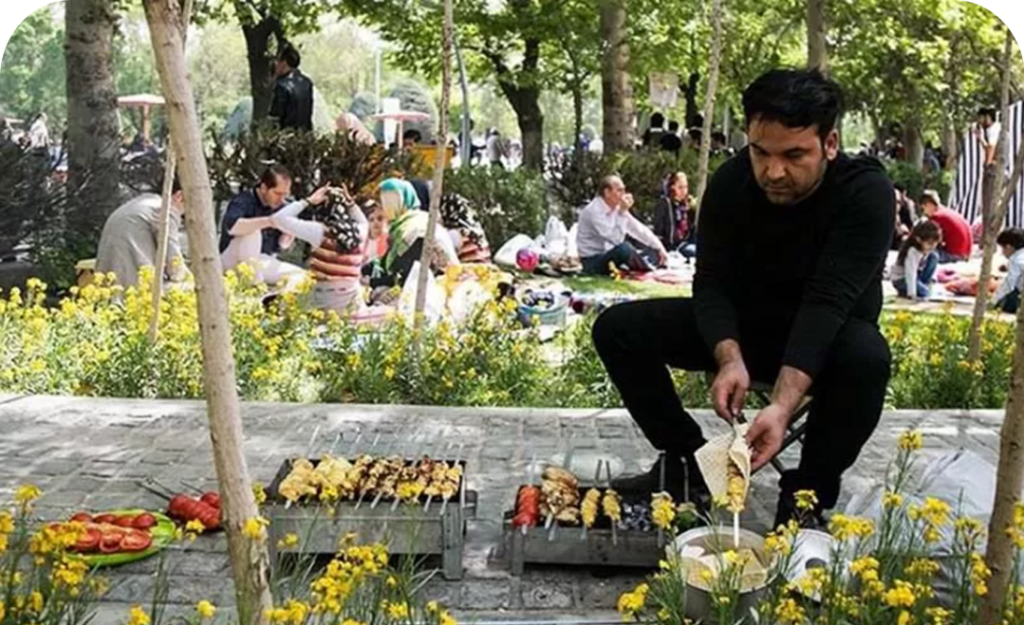
Lie of the Thirteen
The Iranian variant of April Fools’ Day, known as Lie of the Thirteenth (Dorugh-e Sizdah), is celebrated on the first Or second of April, on the Sizdeh Bedar holiday. This holiday has apparently been the subject of jokes since the Achaemenid Empire in 536 BC.

Rain
Sizdah-Bedar is also believed to be a special day to ask for rain. In ancient Iran, every day had its own name, and belonged to a different “yazat” (Zoroastrian deity). The 13th day of month of Farvardin denoted to the deity of rain, Tir, which is depicted as a horse. Sizdah-Bedar is also a day for competitive games, involving horses were often chosen as a victory of a horse represented, the deity of rain.

